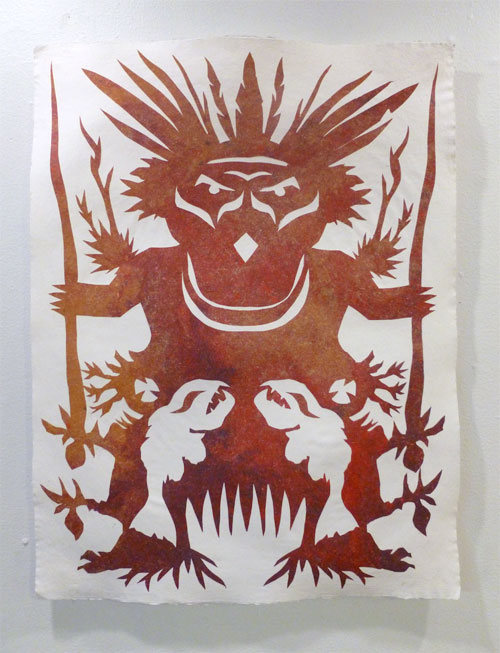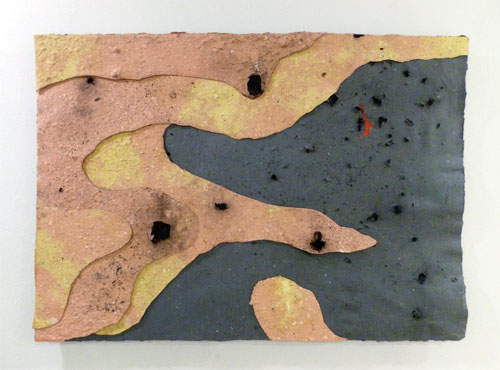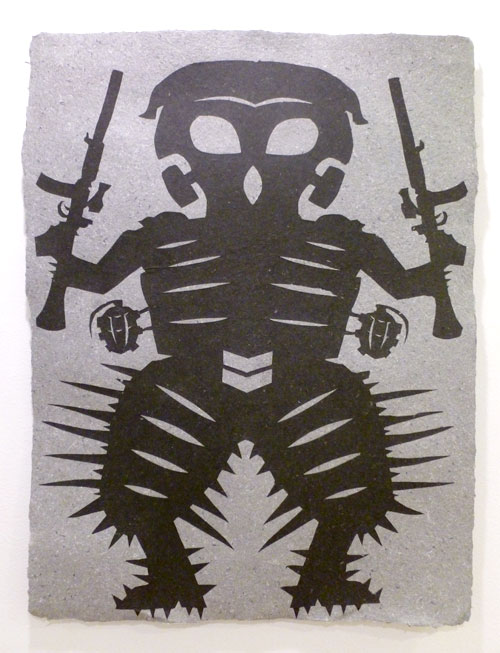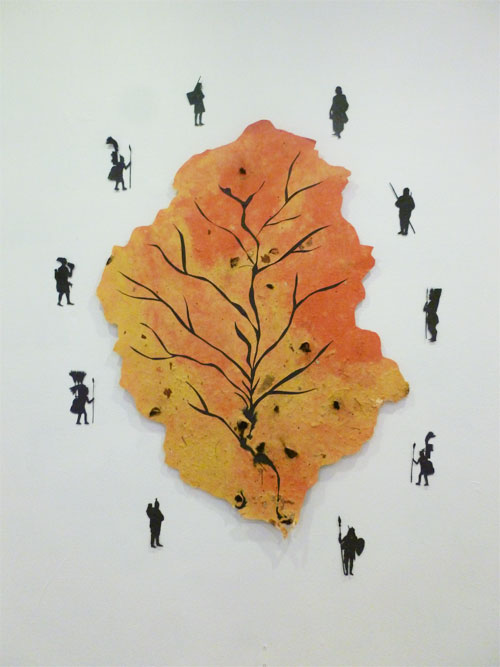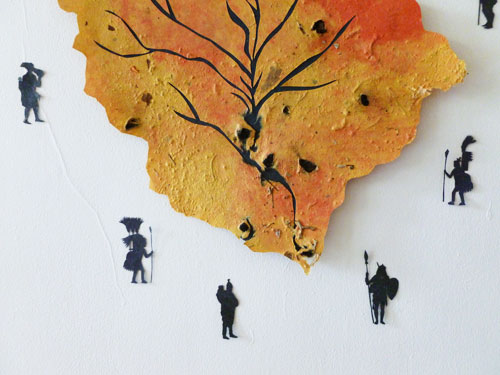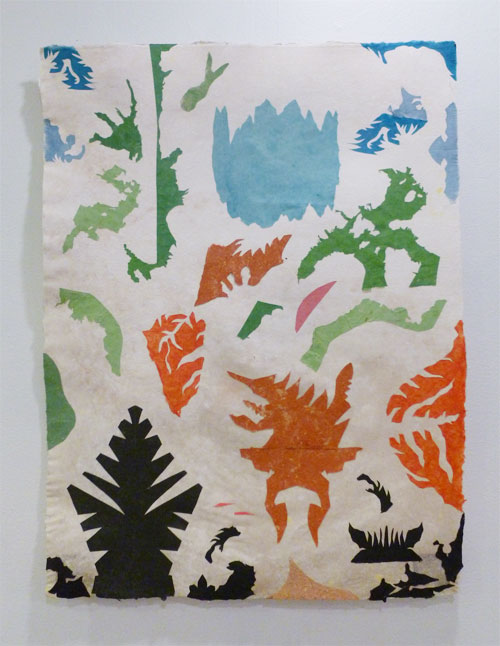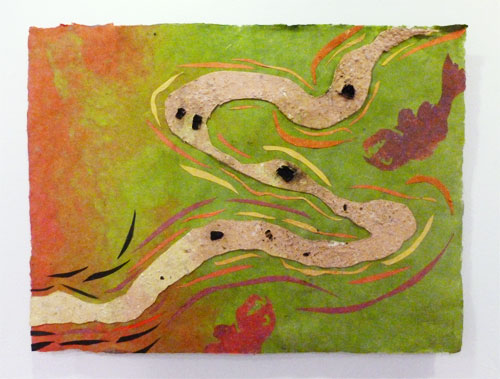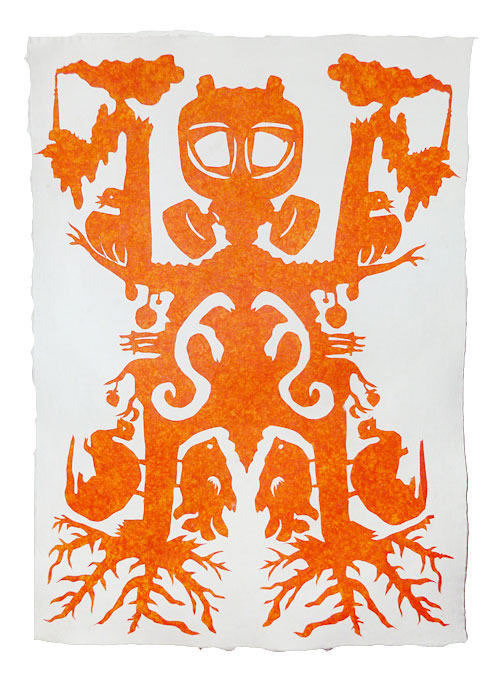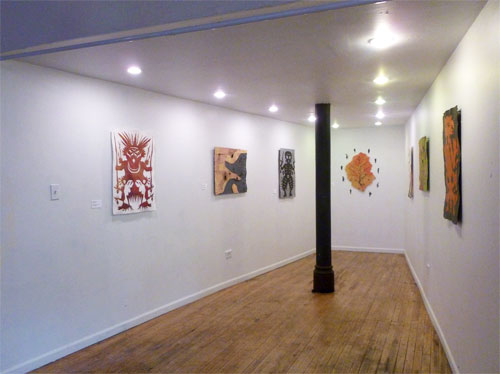BODY OF WORK
Indigenous Unite!
2013
handmade paper
Indigenous Unite! is a collection of portraits and landscapes that explore the effects of oil drilling, mining, logging, hydroelectric projects, and industrial agriculture on indigenous communities in the Amazon rainforest.
This body of work is a meditation on the concept of indigenous resistance in the face of multinational corporations and the governments that support their ill-regulated exploits. As Roberto Perez, a leader of the Colombian U’Wa tribe, states, “We will not die on our knees but rather on our feet. We are willing to die in defense of our territory, because it is the only alternative left to us.”* To give one’s life for such a cause can be considered in light of the idea of embracing failure. To live is such a powerful and innate desire, and to give life by giving up life is an action for the bravest among us. I have much respect for the many indigenous people around the world who protest, occupy, resist, dissent, and fight against the perpetrators of human rights abuses. It is my sincere hope for their actions to be successful in restoring justice to these beautiful lands.
The portraits identify four key players in the struggle: The Capitalist, The Military, The Indigenous, and The Activist.
The Capitalist is represented by a businessman of the biotech industry, preying on farmers with genetically modified seeds that require dangerous chemical use. Whether drilling for oil, mining for minerals, or degrading the soil through industrial monocultures, The Capitalist seeks only profit at the expense of the environment and the people who depend on it for existence.
The Military is the physical brute force with which The Capitalist silences its opposition. Numerous human rights abuses are perpetrated against the indigenous peoples of the world by the armed forces who fulfill the immoral wishes of their Capitalist masters.
The Indigenous is an amalgamation of different tribes and living organisms affected by the The Capitalist and The Military. The warrior represents the indigenous peoples, plants, and animals who depend on a healthy ecosystem to survive, and those of them who fight, protest, and occupy in retaliation to environmental devastation. The imagery was inspired by the indigenous tribes currently occupying and protesting the Belo Monte dam construction in Brazil.
The Activist is a portrait dedicated to all the non-indigenous allies in the struggles against ecological terror throughout the world. Inspired specifically by one such activist, Trisha Oralie Martin, who has worked with local Chicago groups to protest coal fired power plants and the dangerous air pollution they cause.
The portraits are handcut in the style of the Otomi people of Mexico. Use of a Mexican handcraft to discuss the Amazon may at first seem a peculiar choice, but it broadens the conversation from regionally-specific to global. The problems of extractive and industrial activities are a problem for indigenous people around the world.
Blood of Our Mother is inspired by a quote from Roberto Perez, “We believe that the oil is the blood of our mother Earth. It's the equilibrium of nature and the world. And [its exploitation] is an attempt against the spiritual base of our culture and against life itself – against the environment, against the flora and fauna, and against biodiversity.”* The landscape is bleak, poisoned. Here, there is no life, no sign of a healthy ecosystem.
Poisoned Waters exposes the effects of mining tailings in the Amazon river. Fish, an important part local diet, are poisoned and die. The water itself changes color from the toxic waste pumped into it. This water is not safe to drink.
Crude Understory plays on the ecological zones of the rainforest, the existence of crude oil underneath it, and, accompanied by a poem, provides some backstory to the body of work. The poem is based on the words, again, of Roberto Perez, as he gives interview to an American audience in 2001. The interview has been paired down and the fragments rearranged to correspond to the titles of the portraits in this body of work.
Indigenous Unite! (a landscape with the same name as the body of work) presents the Amazon in a possible future state, a completely toxic wasteland, devoid of life. It is surrounded by the silhouettes of indigenous people from around the world, past and present. Like spirits, they stand watch around the charred and dry amazon, bearing witness to its demise, providing a warning to all who look and see that something must be done to avoid this fate.
*Taiara, Camille T. "Dying for Oil U'wa Leader Roberto Pérez Speaks about Indigenous Resistance to the Colombian Oil Rush." The Bay Guardian [San Franscisco] 7 Feb. 2001. |




